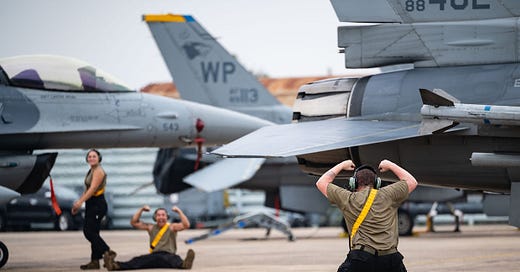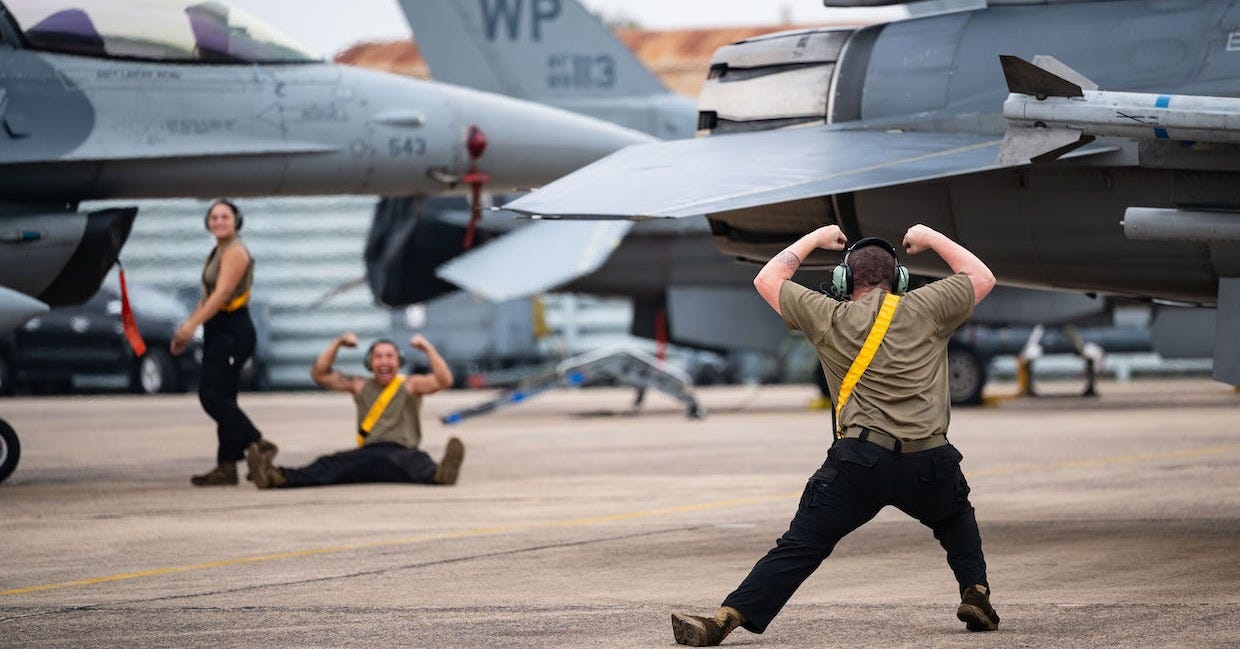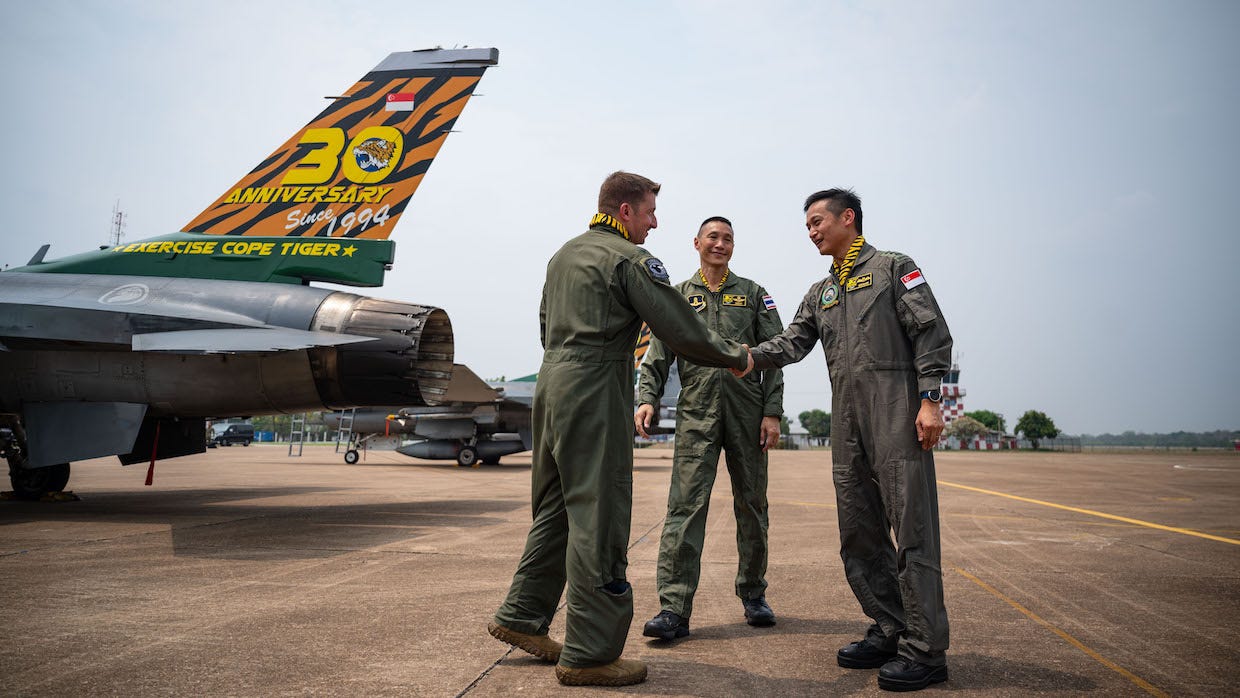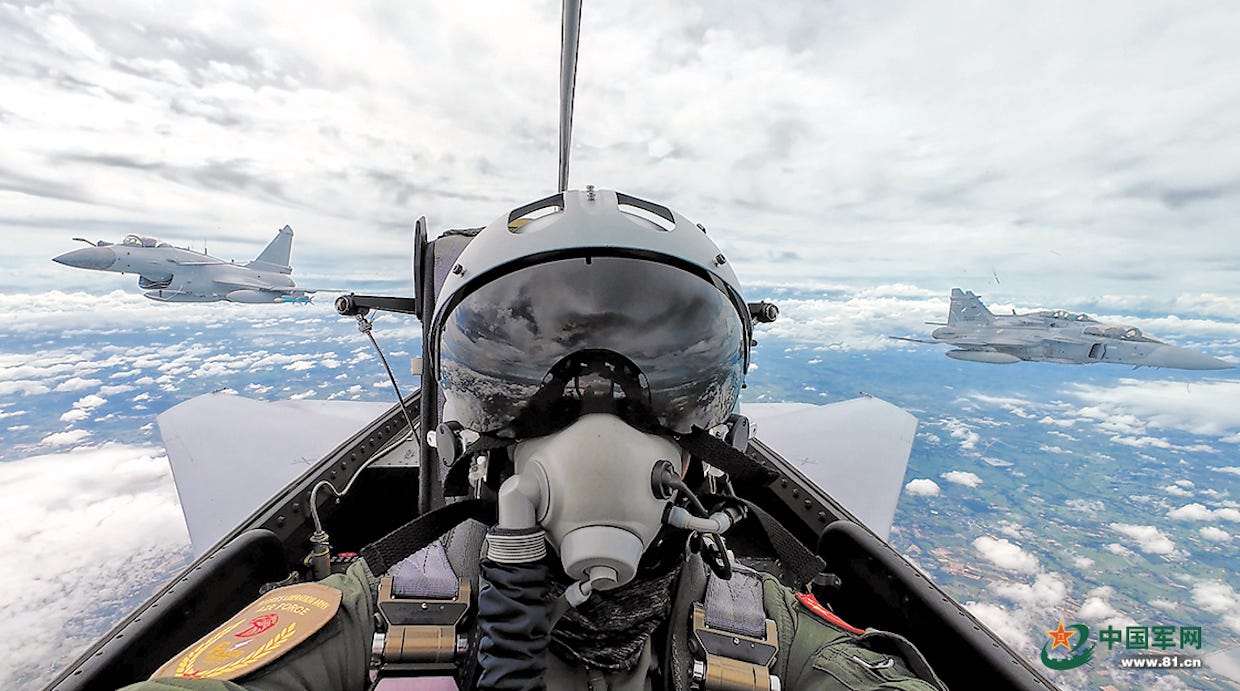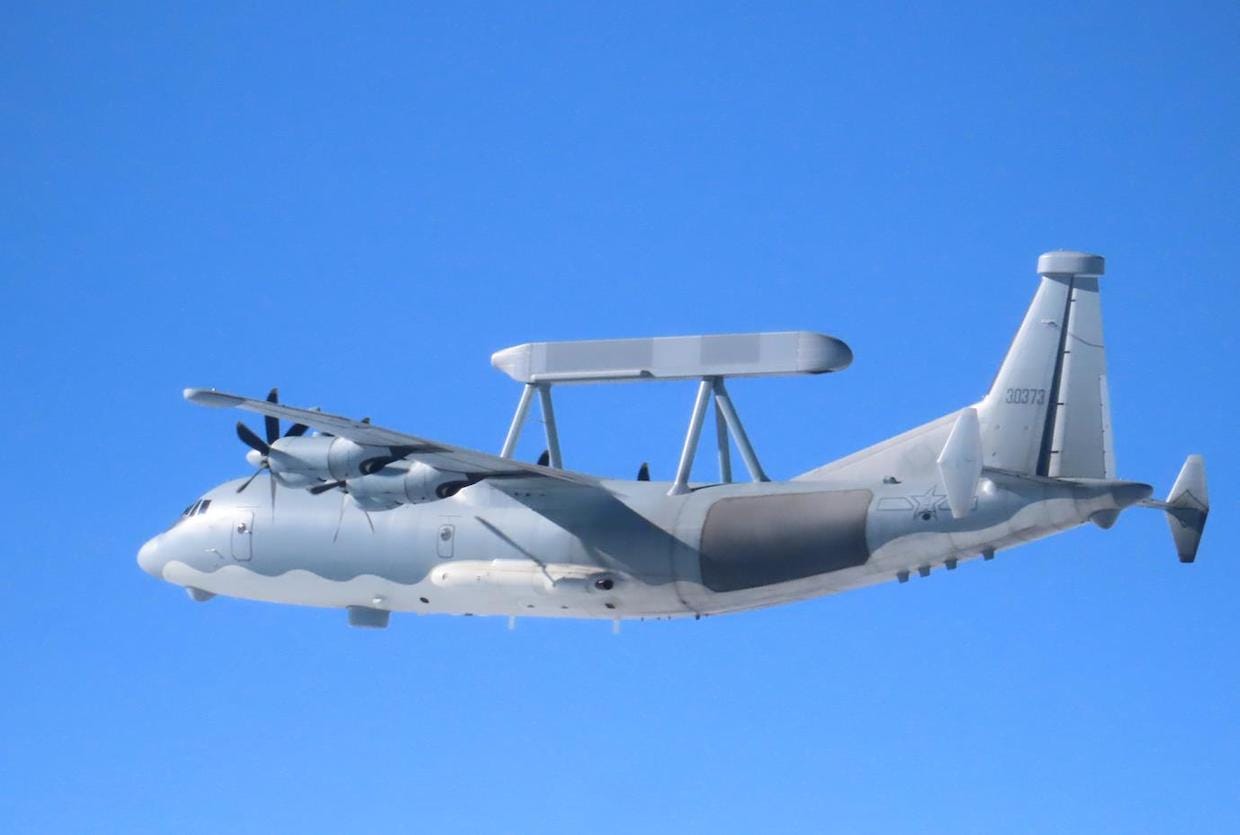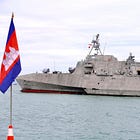US and China flex new military muscle in battle for influence in Southeast Asia
The US and China both sent new, more advanced aircraft to exercises with Thailand for the first time in 2024.
BANGKOK — The US and China sent some of their most sophisticated aircraft to Thailand for the first time in 2024, deploying them for exercises with one of Southeast Asia’s largest air forces.
In March, the US dispatched F-35 stealth jets to the Cope Tiger exercise to train with Thai and Singaporean forces. In August, China sent its new Y-9LG electronic-warfare aircraft overseas for the first time for the Falcon Strike exercise with Thailand.
The debuts show how the US and China are pursuing military engagement with Thailand, which has done more than most other Southeast Asian countries to deepen its military ties with Washington and Beijing while still hedging between the rival superpowers, aiming to benefit from relations with both while spurning neither.
‘Combat situations’
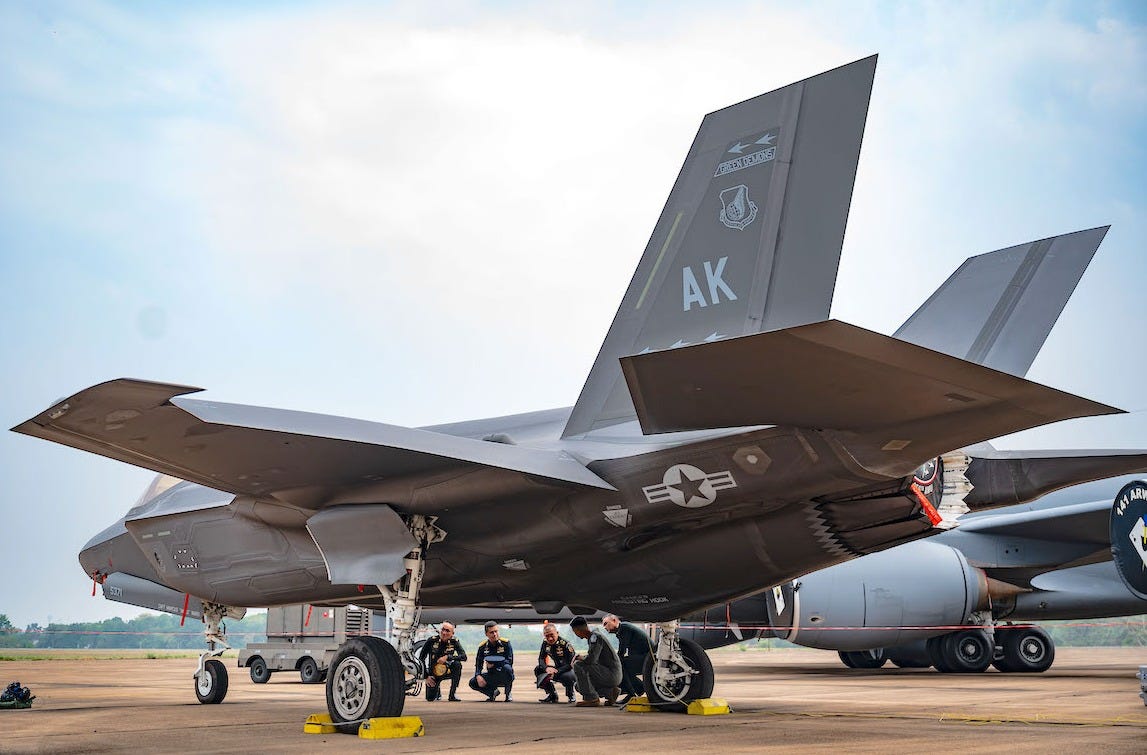
Cope Tiger 2024 was the 30th edition of the exercise but the first involving fifth-generation jets, with eight Alaska-based F-35As joining alongside 10 US F-16Cs from South Korea.
When asked why the F-35A, which entered service in 2016, was sent to Cope Tiger this year, an official at the US Embassy in Bangkok said “ready and capable combat forces help maintain peace” and that “we continue to look for ways to enhance our interoperability with allies and partners, so this was a natural opportunity to incorporate US fifth-generation aircraft into the training to continue growing our shared capabilities.”
The Royal Thai Air Force (RTAF) says Cope Tiger “is considered the largest combined air exercise in Southeast Asia,” and the 2024 version involved more than 75 jets, tankers, and other aircraft and some 2,000 US, Thai, and Singaporean personnel. The stealth jets arrived after several F-35-related milestones in the region and a few weeks after Cobra Gold, a major US-Thai-led multinational exercise.
“Thailand has one of the largest and most dynamic airspace that allows a higher degree of training” and offers “an experience we don't get many other places,” US Air Force Col. Jeffrey Shulman, the exercise director, said at a media day. Adding F-35s helped make it “a great exercise to practice complex large-force engagements,” Lt. Col. Ryan Worrell, commander of the Alaska-based fighter squadron, said at the closing ceremony.
The RTAF said the exercise was designed “to suit current combat situations” and included training in tactics between different types of combat aircraft, training for strikes on ground targets defended by anti-aircraft weapons, and training in tactical intelligence using aerial drones, as well as “simulations of virtual situations in terms of command and control.”
Officials from all three air forces stressed the importance of Cope Tiger for building relationships to share knowledge among airmen and to strengthen overall defense ties.
“I was able to work with the RTAF maintainers to find out we use the same test equipment, and we were able to communicate with the tools we had,” a US airman said. “It just goes to show that we don’t have to speak the same language to get the mission done.”
‘More realistic combat nature’
As forces gathered for Cope Tiger, Thai and Chinese officers were meeting to begin planning Falcon Strike 2024. This year’s edition was the eighth held since 2015, and it has grown from a handful of jets at that first version to include a wider range of aircraft and more personnel, a reflection of deepening Sino-Thai military relations and of China’s growing interest in training with other militaries.
The two governments said this year’s Falcon Strike aimed to facilitate exchanges between personnel and improve military cooperation. China’s military said it had five phases, including force deployment, “joint air defense,” and "joint strike.”
Thailand fielded its European-made Gripen and Alpha fighter jets alongside transport aircraft, an anti-aircraft-missile team, and other ground units. China sent JH-7A and J-10 fighters and the Y-20 cargo plane — its “mainstays in air transport, air-to-air combat and air-to-ground combat,” according to Global Times — as well as the KJ-500 early-warning aircraft, anti-aircraft missiles, and special-operations troops.
The structure of this year’s exercise and the forces involved were seen as noteworthy developments, with a former Chinese military officer saying it had “taken on a more realistic combat nature” and had “all the elements needed for a small-scale war.”
China also sent a new plane to Falcon Strike 2024: the Y-9LG electronic-warfare aircraft, which is believed to have entered service in 2022 and is China’s newest special-mission aircraft. Its exact capabilities are unknown, but it bristles with antennas that are likely for long-range jamming, tracking enemy units, and coordinating friendly forces.
Falcon Strike gives China’s air force a chance to assess itself as develops more advanced capabilities and to get a look at Thailand’s Western-origin jets and tactics. (Bangkok has agreed with Washington not to use its US-made F-5s and F-16s in drills with China.) Such exercises also allow Beijing to demonstrate its influence. The Y-9LG’s inclusion contributes to those goals.
The plane would likely be tasked with “providing electronic warfare and possible early-warning services to the combat aircraft it accompanies,” so it’s “useful” for Chinese pilots “to train with special-mission aircraft that would likely accompany them in any real-world mission,” Timothy Heath, a senior international defense researcher at the Rand Corporation, said in November.
“However, the aircraft’s involvement may also serve a role in propaganda,” Heath added. “By bringing the Y-9LG, China can add another reminder of its technological sophistication and military strength to its Thai neighbors, thereby encouraging Thailand to be careful about offending China and instead increase closer military cooperation.”
‘Less adrift with Beijing’
Those milestones show how the US and China are investing in military ties with Thailand, but their relationships have taken different trajectories in recent years.
China’s military exchanges with Thailand have intensified over the past two decades. In 2005 — just three years after China’s first military exercise with another country — Thailand became the first ASEAN member to exercise with China. When they held Falcon Strike a decade later, they completed a military trifecta.
“They'd done naval stuff. They’d done army stuff,” but “they'd never done joint air exercises, and they did that in November 2015 for the first time,” Benjamin Zawacki, an expert on Southeast Asian security and author of “Thailand: Shifting Ground Between the US and a Rising China,” said in an interview last summer.
The exercises China conducts are still considered less complex than US-led drills, but their scale and frequency has increased, especially in Southeast Asia, where Beijing has focused its defense diplomacy. In addition to more exercises, Thailand has become a major buyer of Chinese weapons, including surface-to-air missiles, armored vehicles, and a long-delayed submarine.
The US and Thai militaries have a decades-long history of exercises, arms sales, and other exchanges, but coups in 2006 and 2014 have cast a pall over the relationship. The post-2014 chill warmed after a White House visit in 2017, with more arms sales, bigger exercises, and high-level meetings — including the first Strategic and Defense Dialogue in 2022.
In March 2024, after the second of those dialogues, Daniel Kritenbrink, assistant secretary of state for East Asia, said their militaries “are closer than ever,” that security cooperation “is probably more robust than ever,” and that the alliance is arguably “as strong as it’s ever been.”
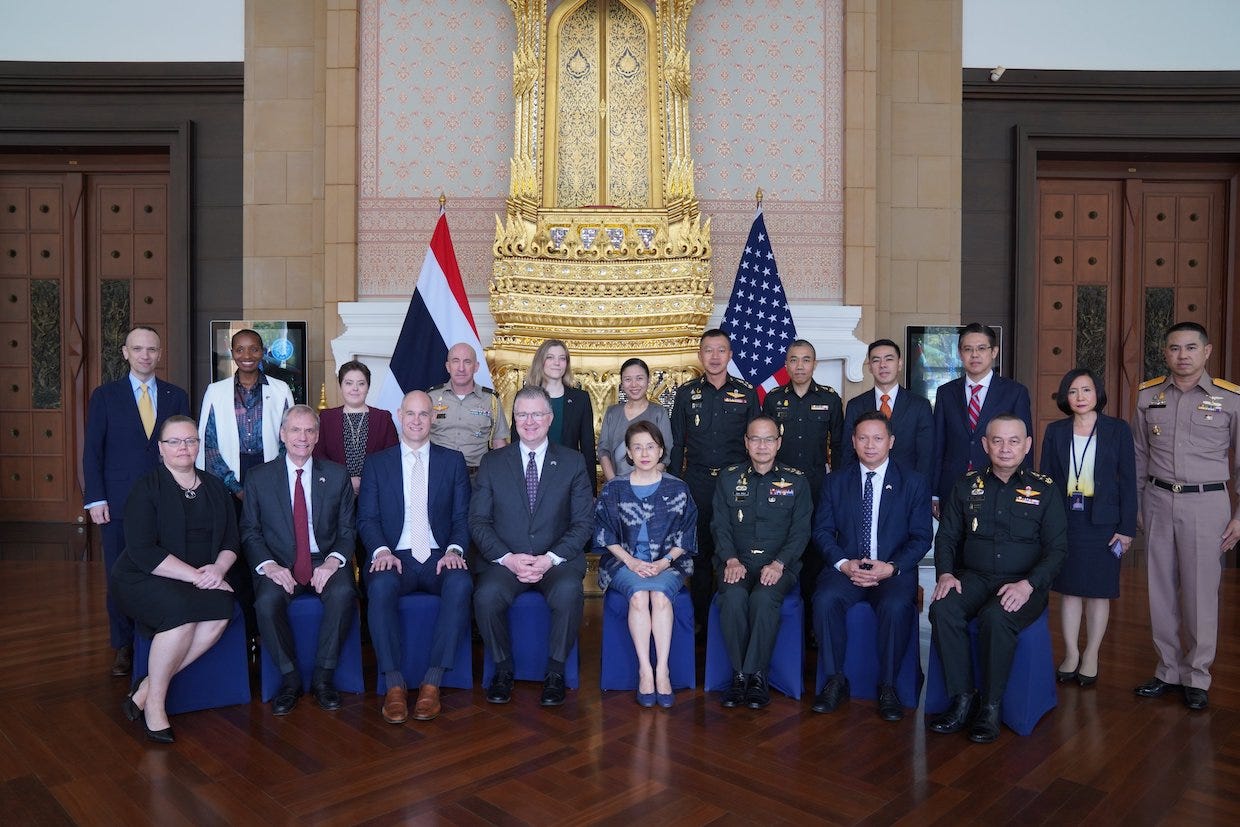
There are signs of divides, however. Zawacki pointed to the US declining Thailand’s request to buy F-35s to replace its aging F-16s in May 2023. The US cited Thai training and technical deficiencies, but many in and outside Thailand saw it as a sign of concern about Bangkok’s ties to Beijing — ties that raise doubt about the alignment that led to Thailand becoming a US treaty ally in 1954 and a major non-NATO ally in 2003.
“If the basis of our alliance for forever was China during the Cold War and then terrorism during the war on terror, and now it's China again for one side and for the other side China is the last country they're thinking of potentially as an adversary, what's the point of an alliance?” Zawacki said. “The fighters, in some ways, are just the physical manifestation of where that alliance is right now.”
While factions within Thailand’s government and military lean different ways, the country has long pursued “realist hedging” to balance between the superpowers, according to Paul Chambers, a lecturer at Thailand’s Naresuan University. “That's not neutrality. It's hedging, and what Thailand is doing is trying to play off China and the United States to get the best deal,” Chambers said in an interview last summer.
But with Thai leaders focused on political infighting and a struggling economy, that balance may be thrown off. Thailand has seen “a steady drift” from the US and other partners over the past two decades "because its domestic situation is very much in turmoil” and “it just doesn't have its act together,” Thitinan Pongsudhirak, a professor at Thailand’s Chulalongkorn University, said at an event in October.
Thailand is “less adrift vis á vis China” because “ruling elites would have more inclination to engage” Beijing, as it doesn’t prioritize values like human rights and democracy, and because China’s system “makes it very receptive to situations like Thailand,” Pongsudhirak said.
“So you have a usurped, subverted election — a lot of countries would say that's not good, but China would say no problem,” Pongsudhirak added. “That's why I think when [Thailand is] adrift from the other powers, it’s less adrift with Beijing.”


